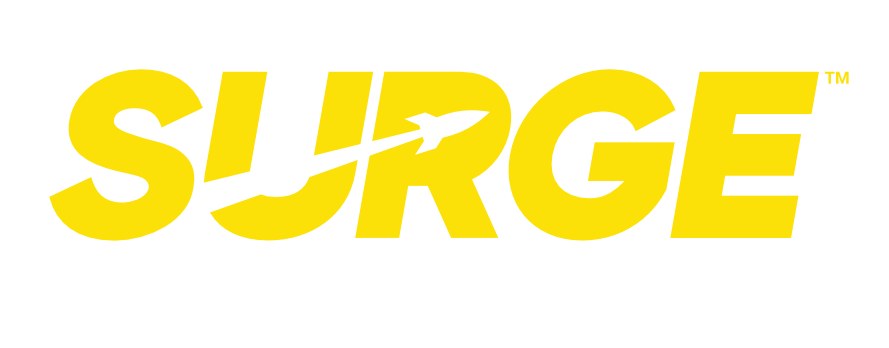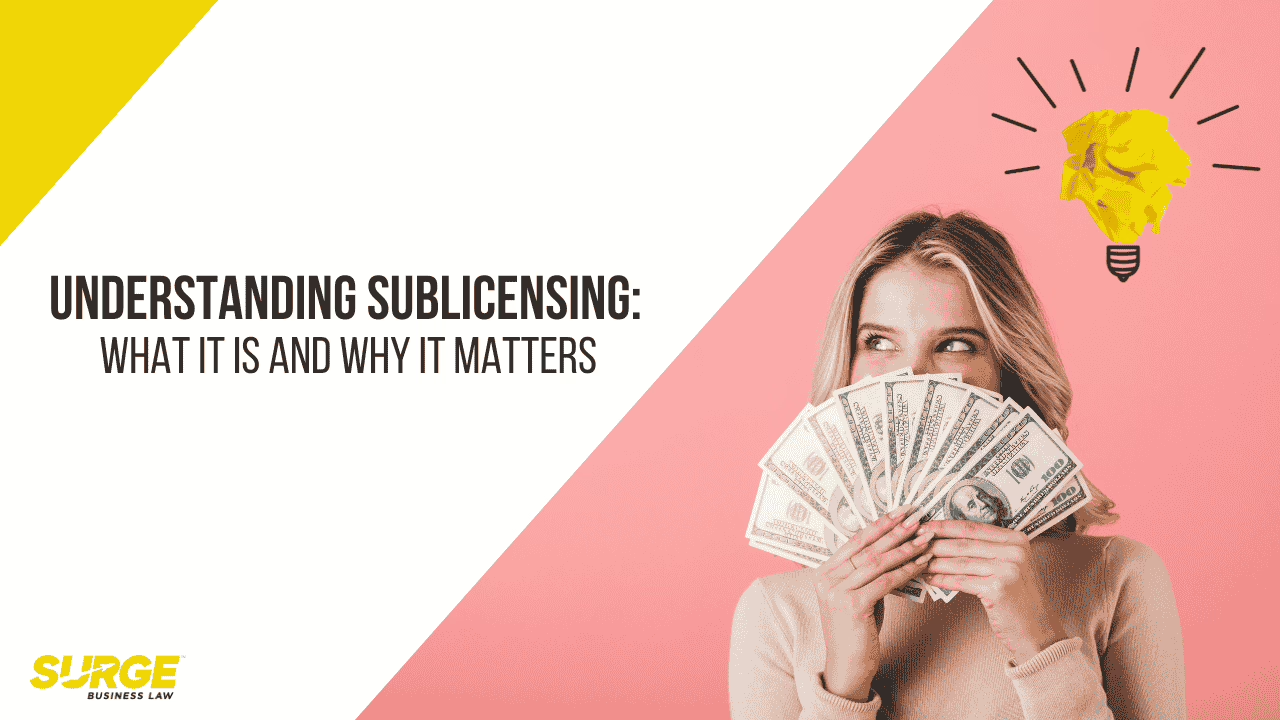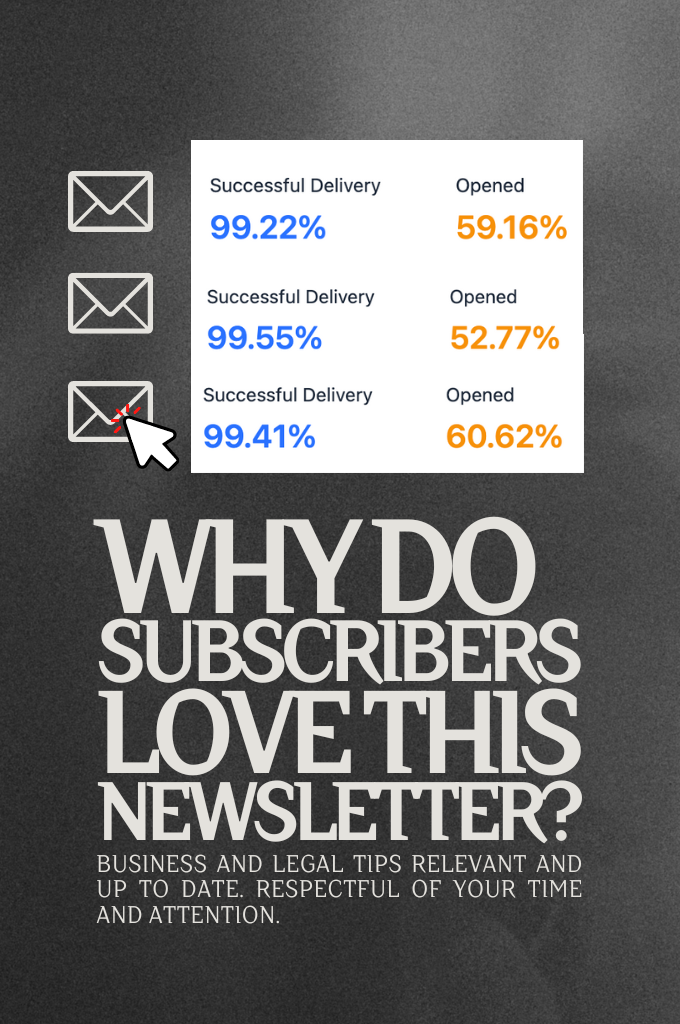Understanding Sublicensing: What It Is and Why It Matters
What is a sublicense? When you have the right to use someone else’s work and you want to allow a different person or company to also use it, that is a sublicense. This is a legally risky topic, so you must get legal help.
Here are the two times we usually see sublicenses: 1) derivative works, where you are creating some new intellectual property that mixes in others’ content and then you want to distribute the new combined work. For example, creating a duet on TikTok or sampling a track in your latest musical creation. 2) When someone else gives you permission to distribute, sell, or market a product on their behalf, for example, if you are taking their invention to a new geographic region.
Let’s learn more about sublicensing.
What is Sublicensing?
Sublicensing is the process of giving someone else permission to use intellectual property that you’ve been granted the rights to. It’s like a chain of permissions: the original owner gives you the right to use their work, and then you give another party the right to use it, too. But as straightforward as that sounds, sublicensing can get complicated—and fast. Why? Because when you sublicense someone else’s work, you’re dealing with a piece of intellectual property that isn’t yours. This means there are a lot of rules and responsibilities that come into play, and failing to follow them can lead to serious consequences.
Two Common Uses for Sublicensing: Derivative Works and Distribution Rights
Sublicensing typically comes up in two main situations. Understanding these scenarios will help you see when and why sublicensing might be relevant to your business:
Derivative Works:
A derivative work is something new that’s created using an existing piece of intellectual property. Think about a remix of a song, a sequel to a movie, or a TikTok duet. If you’ve created something new that includes someone else’s work, and you want to share or distribute it, you might need to obtain a sublicense. This allows you to legally use the original material in your new creation. However, derivative works can be tricky, and it’s essential to have the right permissions in place to avoid legal issues.
Distribution, Sale, or Marketing Rights:
The second common scenario for sublicensing involves distribution. Let’s say you’ve obtained the rights to market or sell a product in one region, and you want to allow another company to sell it in a different region. This is where sublicensing comes into play. By sublicensing the distribution rights, you can expand the product’s reach without taking on the responsibility of handling sales in multiple areas. But just like with derivative works, you need to be careful to ensure that all the legal permissions are in place.
Navigating the Legal Risks of Sublicensing
Sublicensing might seem like a convenient way to expand your business or collaborate with others, but it comes with significant legal risks—especially when it comes to intellectual property rights. The biggest danger in sublicensing is that it exposes you to the risk of violating someone else’s intellectual property rights. If you don’t have the proper permissions, or if the original license doesn’t allow for sublicensing, you could find yourself in a world of legal trouble.
The U.S. has treaties with many other countries to protect creators’ and inventors’ intellectual property rights. Talk to our team before going too far into sublicensing.
Violating Intellectual Property Rights:
If you sublicense without proper authorization, you could be infringing on someone else’s intellectual property. This is a serious issue that can lead to costly litigation and hefty fines. (we know—we litigate intellectual property claims) Intellectual property owners take their rights very seriously, and if they believe their property is being used without permission, they won’t hesitate to take legal action. These lawsuits can be incredibly damaging, both financially and to your business’s reputation.
Potential Litigation Problems and Fines:
Even if you think you have all the permissions you need, sublicensing can still be risky. For example, if the original license agreement is unclear about sublicensing rights, or if you fail to comply with all the terms, you could be sued for breach of contract. The financial penalties for violating intellectual property rights can be severe, and the legal fees alone could be enough to bankrupt a small business. Beyond the financial impact, litigation can also drain your time and energy, pulling your focus away from running your business.
This is why it’s absolutely essential to get legal help before entering into a sublicensing agreement. A qualified attorney like Surge Law can review the original license, help you understand your rights and obligations, and ensure that your sublicense agreement is airtight. We can also help you negotiate deals to ensure you have the correct rights. Don’t take shortcuts here—getting it wrong can be catastrophic.
How to Draft a Sublicensing Agreement
Once you’ve decided to proceed with sublicensing, it’s time to put together an agreement that protects all parties involved. Here are the key elements to include:
- Clear Definitions: Make sure all terms are clearly defined, including what rights are being sublicensed, to whom, and for what purpose.
- Scope of Use: Specify exactly how the sublicensed work can be used. Can it be modified? Distributed? Resold? The more detailed, the better.
- Payment Terms: Outline how and when payments will be made, whether as a lump sum, royalties, or another arrangement.
- Duration: State how long the sublicense will last and under what conditions it can be renewed or terminated.
- Obligations: List any obligations or responsibilities that the sublicensee must meet, such as maintaining quality standards or complying with certain regulations.
- Dispute Resolution: Include a plan for how disputes will be handled, whether through mediation, arbitration, or litigation.
- Not a Franchise: Franchise law is a complex set of laws defined by both the federal and state governments. Licensing and sublicensing when done improperly could be considered a franchise and multiply your legal costs.
Conclusion: Navigating the Complexities of Sublicensing
Sublicensing can be a powerful tool for expanding the reach of your intellectual property or bringing others’ innovations into new markets. However, it’s not without its complexities and legal risks. Whether you’re creating derivative works or helping to distribute a product in a new region, it’s crucial to understand the specific rules and obligations that come with sublicensing. Always seek legal advice before entering into a sublicensing agreement to ensure that you’re protecting your rights and avoiding potential pitfalls. By approaching sublicensing with care and a clear strategy, you can make the most of these opportunities while safeguarding your business.



